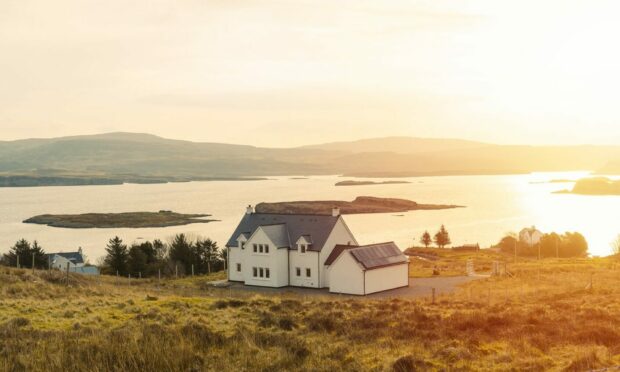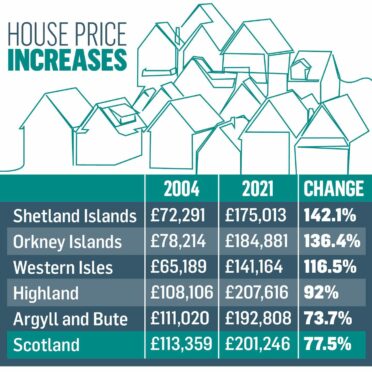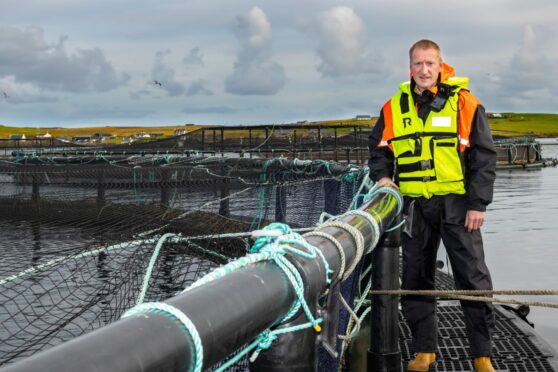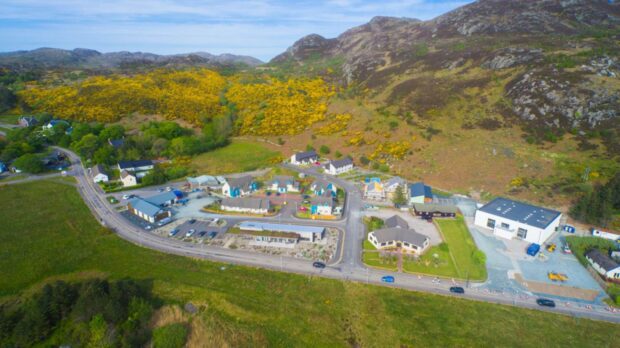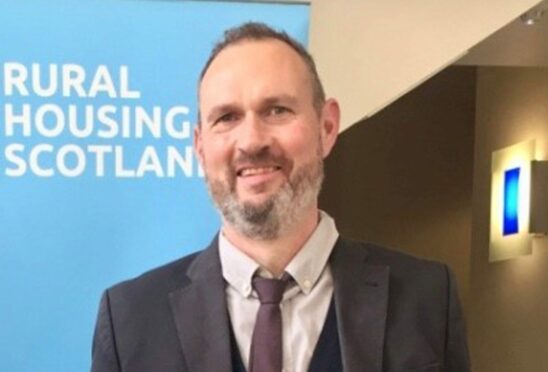House prices have risen more in the Highlands and islands than across the whole of Scotland over 20 years, pricing people and businesses out of our most fragile communities.
In some places, costs have more than doubled since 2003-4.
New analysis of the regional figures has led to calls for money generated locally to be reinvested in the community through affordable housing.
Costs rise as much as 258%
Across Scotland, house prices have gone up by 77.5% – which is an average of £87,887 – between 2004 and 2021.
However, in almost all areas of the Highlands and islands, it has gone up much more.
House prices have shot up in Shetland from around £72,000 to £175,000 in that period.
A similar increase was recorded in Orkney and the Western Isles.
In the Highlands, a 92% increase pushed prices from just over £108,000 to more than £207,600.
In Argyll and Bute, the average price increased from around £111,000 to £192,800.
Comparing prices from the first three months of 2003-4 with the most recent stats for 2022-23 reveals an ever bigger rise.
That snapshot shows prices in Orkney increased from £61,029 to £218,582 – an increase of 258%.
‘People are struggling to find homes’
Tavish Scott, the chief executive of Salmon Scotland, is among those trying to find a solution to protect communities and local business.
A former Shetland MSP, he says licensing money from the Crown Estate should go towards creating affordable housing in the Highlands and Islands.
The Crown Estate is land that belongs to the Queen, and can include buildings, shorelines, forestry, agriculture and common land.
Any surplus revenue from licenced business on these lands gets paid back into the Treasury for the benefit of the nation’s finances.
Mr Scott said: “The shortage of available, affordable housing in island and Highland communities is a growing crisis.
“People are struggling to find homes, and businesses are experiencing problems recruiting staff or retaining staff because they’re priced out of the local housing market.
“Scotland’s farm-raised salmon sector creates jobs and wealth in coastal areas, and we believe our local communities should be the ones who benefit the most.”
Prices continue to rise in 2022
Prices have continued to creep up in the Highlands and islands in the first few months of 2022.
Some of the increase is due to people snapping up holiday homes and escaping cities after the coronavirus pandemic.
From the last quarter of 2021/22 to the first quarter of 2022/23, house prices in Orkney increased by £34,249.
They also rose by £15,772 in Argyll and Bute, £11,191 in the Highlands and £4,605 in Shetland.
Prices did fall in the Western Isles though in this time period, by £18,666.
‘Carrier bags of cash’
Derek Logie, chief executive of Rural Housing Scotland, said people are using “carrier bags full of money” to snap up island homes.
He said: “In Orkney, we are seeing a trend of people moving to remote places because they can now work from home.
“In the Western Isles, we are seeing cash buyers with carrier bags full of money after selling up in more urban areas.
“They think they are getting a bargain because as much as house prices have gone up here it is still comparatively low compared to the south of England or even the central belt of Scotland.
“In Skye, local businesses can’t get staff because the staff can’t get a house there.
“In Applecross young people can’t get homes because of people buying properties there as a holiday home.
“That is pushing prices up for local people, especially young people, who can’t afford to compete.”
He said the trend of older buyers and cash buyers is inflating the market and having a serious impact on rural communities in the Highlands and islands.
Mr Logie added: “Instead of moving to the area and bringing economic activity with them people are buying properties for a holiday home or to put in their portfolio of properties, which is very concerning.”
A spokesman for the Scottish Government said it is working to try and deliver affordable homes in the Highlands and Islands.
They said: “We are now delivering against our commitment of 110,000 affordable homes by 2032, of which at least 70% will be for social rent and 10% in remote, rural and island communities.
“We are also developing a remote, rural and islands housing action plan to bolster this work.
“£3.6 billion funding is being made available in this parliamentary term towards the delivery of affordable homes which includes continued support of up to £30 million towards the demand-led rural and island housing fund for communities and organisations not able to access traditional affordable housing funding.”
